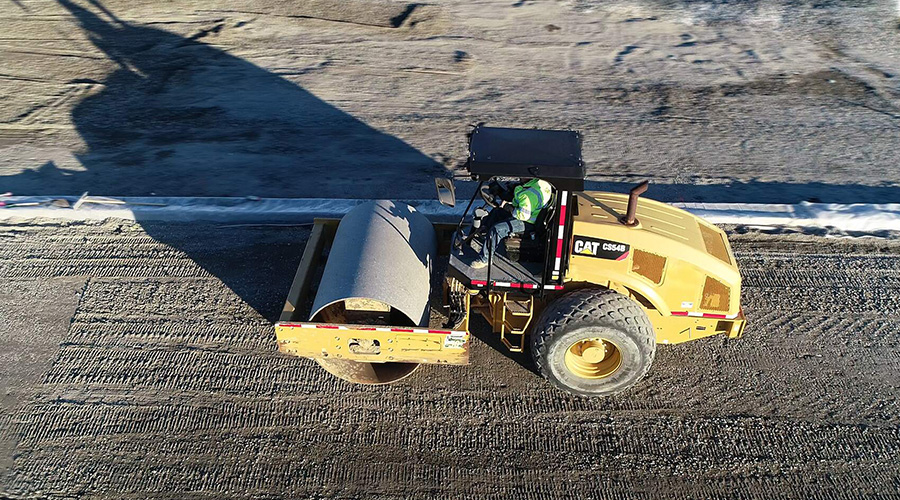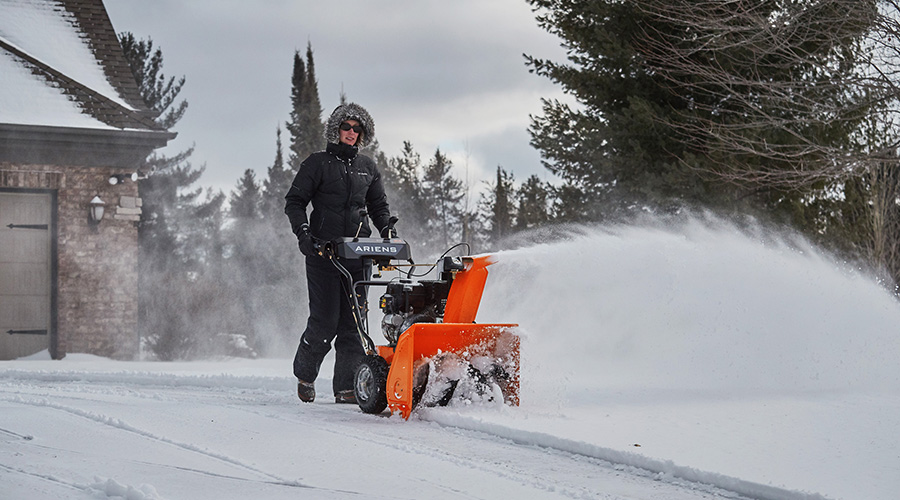Anti- and De-Icing Techniques Important for Safety Reasons
When plowing or shoveling snow no longer can prevent slippery conditions for pedestrians and vehicle traffic, managers need to understand anti-icing and de-icing techniques and the relative best practices crews can employ.
Anti-icing is the best technique for applying salt to prevent the bonding of snow and ice to surfaces that include sidewalks, parking lots and roadways. This method, sometimes referred to as pre-treating, is preferred because it is a proactive, bottom-up approach to preventing snow and ice compaction on surfaces in order to provide safe walking and driving conditions.
One common misconception with this practice is that performing anti-icing before a storm in addition to de-icing after a storm will use more salt and cost more money. In fact, studies have proven that anti-icing reduces salt use because less and sometimes no salt is required after the storm. And because it prevents the bonding of snow and ice, it reduces the risk of slip and fall liability.
By contrast, de-icing is the technique for applying salt to remove accumulated ice or compacted snow already on surfaces. Although de-icing is the most common technique used after a storm, a best practice for salt efficiency is to perform de-icing to complement anti-icing and removal techniques.
When performing anti-icing and de-icing techniques, managers and crews also should be aware of and use best practices:
Measure surface temperature. Knowing surface temperature is a critical first step in determining if it is appropriate to apply salt and, if so, when. Depending on the time, not all surfaces can be treated the same, and not all surfaces will have the same temperature.
Avoid wasting salt. It is important not to apply too much salt because salts and chlorides harm the environment, including freshwater resources, natural vegetation and other landscape investments, including plantings and hardscapes. The best practice for wasting salt is for crews to measure and calibrate the application equipment and choose a standard rate that best applies to specific sites. Equipment operators should know the amount they are applying each time based on a standard amount pre-set for each application.
Use the right salt. Measuring surface temperature will allow crews to select the most appropriate salt. One common mistake is using more of the wrong type of de-icing material when temperatures fall below the normal effective temperature.
Sodium chloride — commonly called rock salt — is typically the least expensive salt available and is normally effective between at 15-32 degrees. Once temperatures fall below 15 degrees, sodium chloride is no longer effective.
Magnesium chloride is more expensive than rock salt and is most effective at 0-15 degrees.
Calcium chloride can be used instead of magnesium chloride — although it might be more costly — and provides a greater range use, -15-15 degrees.
Calcium magnesium acetate (CMA) is sometimes recommended as an environmentally friendly alternative to salt. CMA is a salt that is attached to acetate, which is less chemically volatile than chlorides. CMA can be effective for controlling ice in limited conditions, but it is only effective in the same temperature range as sodium chloride — down to about 15-20 degrees — and can be expensive.
Proper inventory of salt and storage. The best plans and budgets for salt management allow for an inventory that supports and averages two-three weeks of snow and ice conditions. For example, facilities located in a lake-effect region might require enough inventory to support 10-15 applications. For facilities in areas where it snows or dips below freezing only once or twice a month, managers still might want to allow for five applications in case a week of freezing conditions occurs and ice forms. If bagged material is not an option, salt can be stored in bulk and undercover in dry conditions to prevent concentrated runoff into storm drains, freshwater tributaries, and wetlands.
Documentation. While managing a storm, it is important to consider keeping accurate records of department activities. These records can account for the history of work performed and will help if managers need to explain work performed during storms or to help make more informed decisions in the future about best practices. Records will help document the following situations:
- communication and verification of work completion
- estimating future costs for labor and materials use
- possible litigation and defending claims by proving due diligence of work performed
- provide compliance for licensing and to regulatory agencies
In general, site and work documentation should include the same basic information that answers the these questions:
- What did crews and equipment operators do? Describe tasks performed, such as: anti-icing of roadways, parking lots, and sidewalks; plowing roads and lots; clearing sidewalks; de-icing parking lots, roads and sidewalks; and checking for ice in parking lots, roads and sidewalks.
- When did they do it? Include the date and time of each occurrence or visit.
- Where did they do it? Include the name and locations of each serviced site.
- Why did they do it? Include weather conditions that initiated service, including surface temperature, air temperature, type of precipitation, and amount of accumulation.
- Did any incidents occur? Include any reported accidents, such as slips and falls.
Related Topics:














